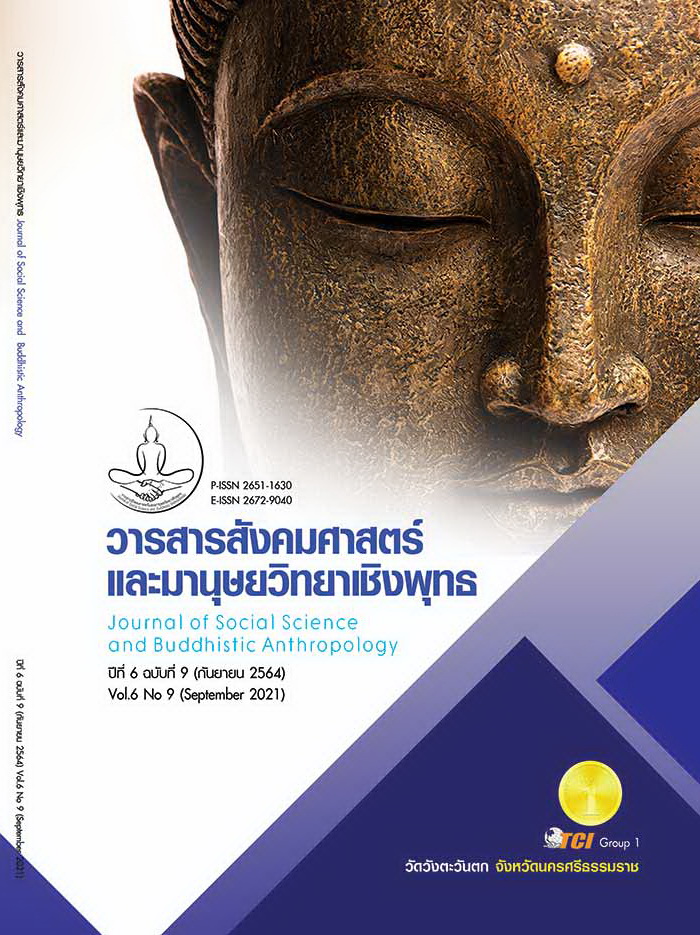LIGHT SHELF DESIGN GUIDELINE FOR ARCHITECTURAL DESIGN STUDIO CLASSROOM
Keywords:
Daylighting, Architectural Design Studio Classroom, Light Shelf, ArchitectureAbstract
The objectives of this research article were to compare lighting illuminance and lighting uniformity from light shelf and ceiling design combinations, appropriate for architectural design studio classrooms. The case study was derived from studio classroom surveying six Thai universities. The design classroom was 9.00 m wide, 20.00 m long and 3.00 m high and operating from 08:00 am to 06:00 pm. Four parameters of light shelves were studied; type of light shelves (exterior, combined, and curved), height from the floor (1.75 m, 2.00 m, and 2.25 m), angle of light shelves (0◦, 15◦, 30◦, and 45◦), and reflectance of light shelf materials (50%, 70%, and 90%). Three parameters of ceilings were studied; ceiling design (flat, into the room slope, out of the room slope, curve), height from the floor (2.60 m, 2.80 m, and 3.00 m), and reflectance of ceiling materials (70%, 80%, and 90%). The experiments were set under the condition of clear sky using DIALux 4.1 software. It has been found that the most appropriate light shelf and ceiling design for architectural design studio with openings at the northern side is the exterior light shelf with installation at the height of 1.75 m, at the angle of 30◦ and the light shelf material reflectance 90%, together with the curved ceiling at the 3.00 m height and material reflectance 90%. The most appropriate light shelf and ceiling design for architectural design studio with openings at the southern side is the combination light shelf with the installation height of 2.00 m, at the angle of 15◦ and the light shelf material reflectance 90%, together with the curved ceiling at the 3.00 m height and material reflectance 90%.
References
กฎกระทรวง ฉบับที่ 55 (พ.ศ. 2543) ออกตามความในพระราชบัญญัติควบคุมอาคาร พ.ศ. 2522. (2543). ราชกิจจานุเบกษา เล่ม 117 ตอนที่ 75 ก. หน้า 16-30 (7 สิงหาคม 2543).
ทิพวรรณ ลิ้มสัจจาพาณิชย์. (2557). การออกแบบฝ้าเพดานผ้าใบที่ใช้ร่วมกับหิ้งแสงเพื่อเพิ่มประสิทธิภาพการใช้ประโยชน์จากแสงธรรมชาติสำหรับอาคารสำนักงาน. ใน วิทยานิพนธ์มหาบัณฑิต สาขาสถาปัตยกรรมศาสตร์. มหาวิทยาลัยธรรมศาสตร์.
ประกาศกระทรวงศึกษาธิการ (ฉบับที่ 2). (2556). เรื่อง แนวทางการเพิ่มประสิทธิภาพการใช้ประโยชน์อาคารของสถาบันอุดมศึกษา ราชกิจจานุเบกษา เล่ม 130 ตอนพิเศษ 47 ง. หน้า 19-21 (11 เมษายน).
พิบูลย์ ดิษฐอุดม. (2545). การออกแบบระบบแสงสว่าง. กรุงเทพมหานคร: ซีเอ็ดยูเคชั่น.
เรณุ ด่านกุล. (2545). การออกแบบหิ้งสะท้อนแสงเพื่อเพิ่มประสิทธิภาพในการนำแสงธรรมชาติมาใช้ในสถานศึกษา: กรณีศึกษาอาคารเรียนระดับมัธยมศึกษาในเขตกรุงเทพมหานคร. ใน วิทยานิพนธ์สถาปัตยกรรมศาสตร์ สาขาสถาปัตยกรรมเขตร้อน. สถาบันเทคโนโลยีพระจอมเกล้าเจ้าคุณทหารลาดกระบัง.
ศรัญญา ครุวาทนนท์. (2547). การศึกษาความเป็นไปได้ในการใช้ฝ้าเพดานเพื่อเพิ่มปริมาณแสงสว่างที่เหมาะสมภายในห้องเรียนในเขตกรุงเทพมหานคร. ใน วิทยานิพนธ์สถาปัตยกรรมศาสตร์ สาขาสถาปัตยกรรมเขตร้อน. สถาบันเทคโนโลยีพระจอมเกล้าเจ้าคุณทหารลาดกระบัง.
Baiche, B. & Walliman N. (2012). Architects’ Data. (4th ed.). West Susse: Blackwell Publishing Ltd.
Heschong Mahone Group. (1999). Daylighting in schools: an investigation into the relationship between daylighting and human performance. Retrieved October 19, 2020, from https://www.pge.com/includes/
docs/pdfs/shared/edusafety/training/pec/daylight/SchoolDetailed820App.pdf
Kompier, M. E. et al. (2020). Effects of light transitions on measures of alertness, arousal and comfort. Retrieved October 19, 2020, from https://www.sciencedirect.com/science/article/pii/S0031938420303139
Smolders, K. C. H. J. et al. (2013). Daytime light exposure and feelings of vitality: Results of a field study during regular weekdays. Journal of Environmental Psychology, 36(2013), 270-279.
Thomson, G. (1989). The museum environment. London: Butterworth-Heinemann.
Vandewalle, G. et al. (2006). Daytime Light Exposure Dynamically Enhances Brain Responses. Current Biology, 16(16), 1616-1621.








